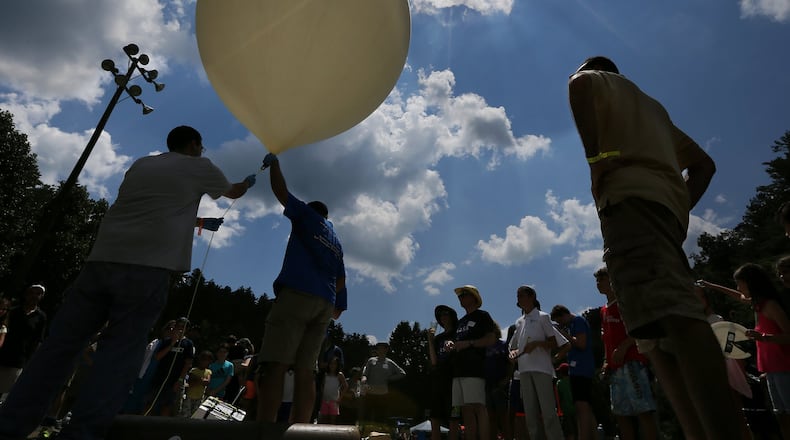The ionosphere, a boiling soup of charged particles, is a mysterious place. Balloons won’t float there, because there’s not enough air, but satellites can’t fly there either, because there’s too much air.
“It’s a difficult region to sense,” said Georgia Tech professor Morris B. Cohen, who teaches electrical engineering and is associate director of the school’s Center for Space Technology and Research.
Beginning at 60 kilometers above the ground, it is nonetheless a useful region to explore. Because of its ability to bounce radio waves, it was once part of a global positioning system, long before satellite GPS existed.
Seven years ago, during the solar eclipse of August 21, 2017, Cohen observed how radio waves bounce off of this traveling patch of nighttime, like radar bounces off of an aircraft. He determined ways to take advantage of that moment.
Cohen will have another chance on April 8, during a totality that will sweep eastward through the United States, from Texas to Maine.
Reflecting extremely low frequency radio waves off of the swiftly moving shadow can help form a picture of this slice of the sky. But radio waves from AM and FM transmitters are too high frequency. Cohen said that a good source of radio waves in the range of 10 to 100 kilohertz is lightning.
“There’s plenty of lightning around the world; three million lightning flashes a day,” he said. Lightning generates low frequency radio waves that circle the globe. Even lightning strikes in Africa generate plenty of useful low frequency radio waves that can be detected right here in the U.S.
To listen to those bouncing radio waves, three Tech students and a research engineer will travel to Lost Pines, Texas, setting up special equipment in three different locales during this event. The equipment consists of two triangular loops of wire about five feet wide, suspended waist-high off the ground by a length of PVC pipe. They are connected to a shoebox-sized console that grabs the signal, records it a million times a second and sends it off to a computer.
“What the eclipse does is it gives us a perfect planned sunset, daytime to nighttime to daytime, very rapidly,” said research engineer Kevin Whitmore, part of that Texas-bound team. The reflective layer of the ionosphere, the “D” layer, moves higher at night — even during the temporary night of an eclipse — and back down in the daytime. “It gives us a peek at how those layers move up and down based on the influence of the sun.”
Whitmore spoke by telephone from the highway, as he and first-year doctoral student Matthew Strong drove back from Mississippi where they had been repairing one of Cohen’s devices.
There are at least 10 such installations in North America measuring reflected low frequency radio waves, all using instruments built at Georgia Tech, but the three stations in Texas, in the path of totality, will be the center of the action this month. They should be able to provide a cross-section of that part of the atmosphere, just as an MRI generates a slice of a view of an internal organ, said Cohen.
Credit: Georgia Tech
Credit: Georgia Tech
One of the reasons that the eclipse is useful is because its size, shape, pathway and velocity are known. “It is, itself, a small-scale feature in the ionosphere,” said Cohen. “We know exactly where it’s going to be and what time it’s going to be there. You usually don’t have that in nature.”
He wants to delve into that interaction mostly to determine the texture of the surface that is bouncing these radio waves.
“When people calculate how radio waves work under this ionosphere, they tend to assume it’s a nice smooth surface,” he said. “I always questioned that. There ought to be a roughness to it; it’s a shaggy carpet, not a smooth mirror.”
Before satellite-based GPS existed, the U.S. bounced ground-based low frequency radio waves off the ionosphere as a global positioning system. Strong said satellites are ”fragile,” and vulnerable to attack.
By mapping the ionosphere, Cohen’s studies could help lay the groundwork for a fallback system that would be unaffected by sabotage or solar flares.
About the Author
Keep Reading
The Latest
Featured





